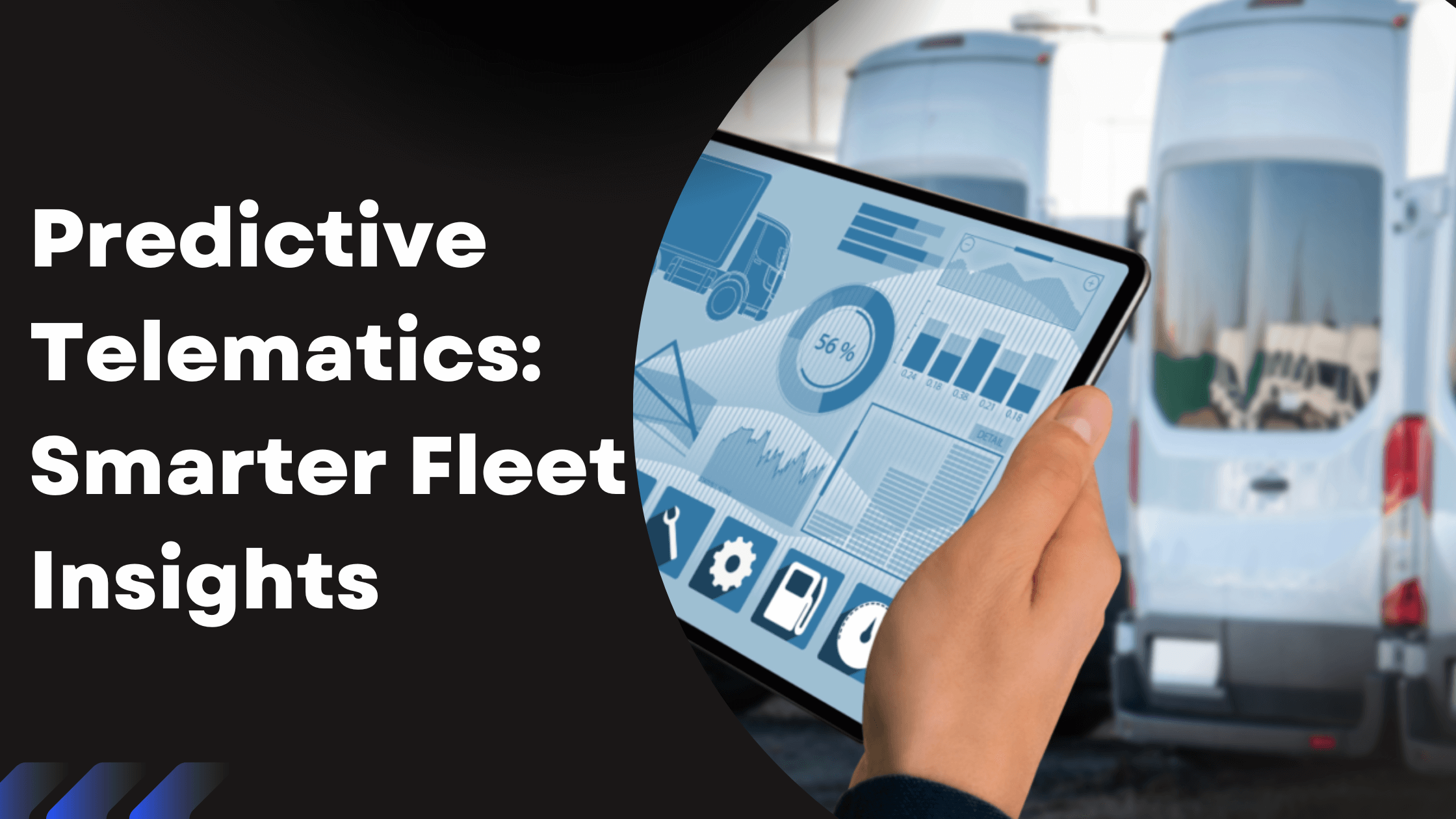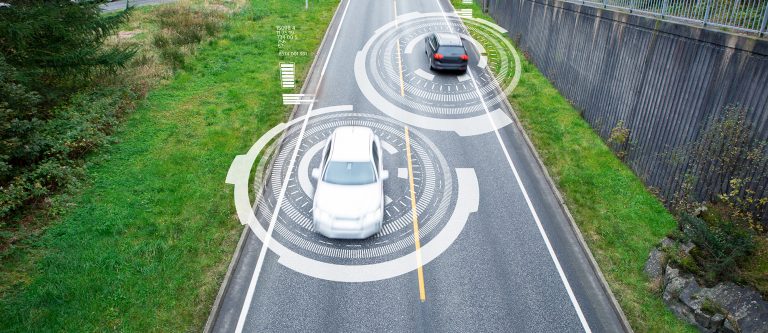Predictive analytics in telematics taps into past and live vehicle data, then runs it through smart algorithms and learning models to spot what’s likely to happen next. Rather than waiting for a breakdown or surprise repair, fleet operators can step in early—guided by patterns the system catches before things go sideways.
Predictive Analytics in Telematics: Real-Time Insights & Future-Proof Fleet Safety
Jun 10, 2025 Resolute Dynamics

Cars and trucks aren’t just engines and wheels anymore. They’ve learned to think on the go. With the help of predictive analytics in telematics, fleet operators don’t have to wait for trouble — they get a heads-up, early.
Let’s break down what that actually looks like, and why it matters if your business depends on moving things or people safely and on time.
✅Key Takeaway:
Predictive analytics in telematics taps into real-time and past vehicle data—like engine health, driver patterns, and GPS movement—and feeds it through smart algorithms. The system spots trouble before it strikes. Fleet managers can act ahead of time, not after the fact. This cuts costs, keeps vehicles rolling, boosts safety, and sharpens efficiency. For any operation that depends on transport, it’s more than helpful—it’s a quiet revolution.
What Is Predictive Analytics in Telematics?

Breaking It Down: From Data to Prediction
Telematics systems constantly collect data from vehicles using:
- Onboard sensors (e.g., tire pressure, engine temperature, oil levels)
- GPS tracking units (location, speed, route history)
- CAN bus data (real-time communication with vehicle components)
- Driver behavior monitors (harsh braking, idling, lane drifting)
This raw data is transmitted via cellular or satellite networks to a central platform—often cloud-based—where predictive models analyze it using:
- Pattern recognition algorithms
- Time-series forecasting
- Statistical regression models
- Anomaly detection
The result? You get actionable insights like:
- “This vehicle’s transmission is likely to fail in the next 30 days.”
- “Driver #42 is showing fatigue signals based on micro-steering corrections.”
- “This route has a high accident likelihood based on recent sensor logs.”
Real-World Example
This is not a simple alert system. It’s a form of vehicle intelligence that uses:
- Historical baselines (What’s normal for this vehicle?)
- Comparative fleet data (Is this happening to others?)
- Machine learning feedback loops (How accurate were previous predictions?)
Why It Matters
Predictive analytics gives fleet operators situational foresight. It reduces:
- Unexpected breakdowns
- Costly repairs
- Safety risks
- Insurance claims
And it boosts:
- Operational uptime
- Asset utilization
- Fleet longevity
- Regulatory compliance
Instead of being reactive, fleets become intelligent ecosystems that self-optimize over time.
Key Technologies Driving Predictive Telematics
Predictive telematics is only possible because of a powerful mix of advanced technologies working together. These systems form the digital nervous system of modern vehicles, constantly gathering, processing, and interpreting data to make smart, proactive decisions.
Let’s break down the major players behind the scenes:
AI-Powered Vision Systems
These are intelligent camera-based systems that use computer vision and deep learning to “see” what’s happening around the vehicle.
They can:
- Detect lane drift, road signs, and speed limits
- Recognize traffic lights, pedestrians, and obstacles
- Monitor the driver’s face for signs of distraction or fatigue
Think of them as advanced driver assistance systems (ADAS) with a brain. They’re trained on huge datasets so they can recognize patterns in real time and feed that information into broader telematics systems.
Machine Learning Algorithms
Machine learning is the brain behind predictive smarts. It studies past and live data to catch patterns and guess what’s coming next.
Say a driver keeps slamming the brakes around the same stretch of road. The system notices and marks it as risky behavior. Or maybe an engine’s heat profile starts looking suspiciously like one that failed last month — boom, the system speaks up.
Types of machine learning models used:
- Classification models: Is this behavior risky or safe?
- Regression models: How likely is a tire to blow based on current pressure loss trends?
- Clustering algorithms: Which vehicles are behaving similarly under similar conditions?
Real-Time Telematics Platforms
This is the digital backbone connecting the vehicle to cloud servers and fleet management dashboards. These platforms gather real-time data from various components and transmit it using cellular, satellite, or Wi-Fi connections.
They handle data such as:
- Speed and acceleration
- Engine health and diagnostics (via OBD-II or CAN bus)
- Fuel consumption
- Geolocation and geofencing
These platforms often include dashboards, APIs, and alerts that let fleet managers monitor vehicle health and behavior 24/7.
IoT Sensors
Common sensor types:
- TPMS (Tire Pressure Monitoring System): Detects pressure drops
- Accelerometers & gyroscopes: Track movement and orientation
- Temperature sensors: Monitor coolant, brakes, engine heat
- Vibration sensors: Flag mechanical wear and tear
These sensors continuously send data to the central telematics system, which helps detect patterns and trigger predictive maintenance or safety alerts.
How It All Comes Together
These technologies don’t work in silos—they’re tightly integrated. Here’s what the process looks like:
- IoT sensors detect an unusual spike in engine vibration.
- The data is sent instantly via the telematics platform.
- Machine learning algorithms compare the pattern to past data and predict an imminent failure.
- An alert is sent to the fleet manager’s dashboard, and a preventive maintenance action is scheduled.
- If equipped, the AI vision system may also adjust driving behavior or alert the driver in real time.
This fusion of technologies transforms basic data into high-value, proactive intelligence. It’s what enables fleets to act before trouble strikes—improving safety, reducing downtime, and cutting costs.
Top Use Cases of Predictive Analytics in Telematics

1. Fleet Risk Management
Predictive systems can tell when a driver is speeding often or braking hard. Over time, that behavior can increase accident risk. The system flags it, helping managers offer retraining or guidance before an incident happens.
2. Proactive Vehicle Maintenance
3. Driver Performance Optimization
4. Smart Compliance Enforcement
5. Fuel Efficiency & Environmental Impact
By tracking engine idling, route choices, and driver habits, predictive telematics cuts fuel waste and lowers carbon emissions. That’s good for business—and the planet.
Benefits of Predictive Telematics for Fleet Operators
Predictive analytics isn’t just high-tech fluff. It brings real, measurable benefits:
- Fewer Accidents: Spotting trouble early—whether it’s a worn part or risky driving—helps prevent accidents and trims insurance bills.
- Lower Operating Costs: Staying ahead on maintenance and encouraging smoother driving cuts fuel use, wear and tear, and surprise repairs.
- Happier Drivers: When drivers know the system’s got their back, they feel safer and more valued. That boosts morale and keeps them around longer.
- More Control: Managers can plan ahead with accurate forecasts, not just guesswork.
- Global Compliance: For fleets working across countries, predictive tools help stay aligned with different road safety laws.
Industry Applications That Are Seeing Results
Predictive telematics is being used in a wide range of industries:
- Logistics Fleets: Delivery trucks that need uptime and tight schedules
- Public Transportation: Buses where safety is critical for passengers
- Emergency Services: Ambulances that must run reliably under stress
- Heavy Equipment: Construction fleets with high-value machinery
In all of these, predictive analytics offers the same promise: less downtime, more uptime.
Resolute Dynamics: A Real-World Example
Their approach is built on three pillars:
- Capture: Using AI vision to detect signs, hazards, and driver behavior.
- Connect: Transmitting real-time data from vehicle to cloud.
- Control: Taking action to adjust speed, alerts, or route based on analysis.
Their technology isn’t about reacting—it’s about predicting and preventing. That’s the real future of vehicle safety.
What’s Next for Predictive Telematics?
The future is moving fast. Here’s where it’s heading:
- Edge Computing: Processing data directly in the vehicle for faster decisions.
- More AI Power: Smarter models that can even predict road conditions like traffic or weather impact.
- Global Scalability: One dashboard to manage fleets across different countries and rules.
- Autonomous Integration: Predictive analytics will become a core brain for self-driving vehicles.
We’re not far from a world where vehicles act before problems occur—making every journey safer and more efficient.
FAQs: Quick Answers for Curious Minds
What is predictive telematics?
It’s the use of data and AI to forecast issues in vehicles before they happen, using telematics systems.
Can it reduce accidents?
Yes. By identifying risky driving and mechanical problems early, accidents can be prevented.
Is it in real time?
Absolutely. Sensors and cloud systems work together to provide instant insights.
Is this technology expensive?
Upfront costs exist, but savings on fuel, repairs, and insurance quickly make up for it.
Can it work in any country?
Yes. Predictive systems like those from Resolute Dynamics are designed for use across global fleets, including areas like the UAE, India, and Southeast Asia.
Final Thoughts
Predictive analytics in telematics isn’t on the horizon—it’s already reshaping how vehicles move, how fleets operate, and how safety is approached at scale. A dashboard warning five minutes before a breakdown used to be impressive. Now, systems can flag a failing component days in advance based on subtle shifts in temperature or vibration. Fleet managers no longer scramble after a missed delivery—they see patterns building and adjust before delays hit the schedule. In urban systems, traffic signals sync with live data, optimizing flow and preventing pileups before they form. The shift is subtle but seismic: from reacting to problems to quietly avoiding them altogether. Whether you’re handling freight across thousands of miles or refining a city’s public transport system, the message is clear—real-time isn’t fast enough anymore.
When vehicles can think ahead, everyone gets home safer.